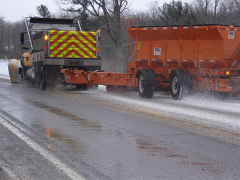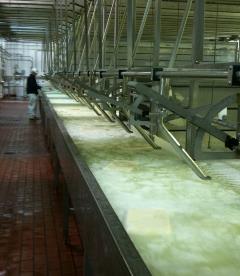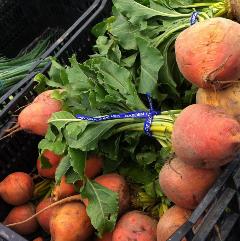Heather Black, Chesapeake Conservation Corps Volunteer
 With each passing day, we get closer to the season of snow, sweaters, and hot chocolate. As the seasons change from fall to winter, the Department of Transportation here in Maryland – and in countless other states and cities across the country – are preparing for the inevitable snowfall.
With each passing day, we get closer to the season of snow, sweaters, and hot chocolate. As the seasons change from fall to winter, the Department of Transportation here in Maryland – and in countless other states and cities across the country – are preparing for the inevitable snowfall.
Our lives do not stop with the first snowflake that falls. So we have had to find ways to help people stay safe as the roads become slick. In a recent blog, IWLA Clean Water Fellow Scott Maxham introduced us to road salts – the ingredient used to de-ice state highways and city streets across the country for more than half a century.
Although the United States has seen a reduction in winter car accidents due to the use of road salts, there are downsides. The application of road salts can harm freshwater organisms and increase the amount of chloride found in our waterways – waterways that we depend on for drinking water and outdoor recreation.
Commercially available alternatives to road salts have not taken hold due to their cost. However, states and localities are currently exploring several food-based alternatives:
- Beet Juice: This technique is growing in popularity. Sugar beet molasses is mixed with salt brine to produce a sticky substance that adheres to hard surfaces. This stickiness reduces the bounciness of salt of the brine and keeps it in place longer than normal road salts. It is also a non-corrosive solution and lowers the freezing temperature of water to around -20 degrees Fahrenheit.
 Cheese Brine: A leftover byproduct in making soft cheeses, cheese brine has been used in combination with road salts in Wisconsin for pre-wetting and treating roadways. The arrangement is a win-win for both dairy producers and the transportation department: Contributing cheese factories receive free removal of a waste product (brine). The state Department of Transportation receives a cheap product that not only adheres to roadways but appears to lower the freezing temperature and reduce the accumulation of snow and ice better than road salts alone.
Cheese Brine: A leftover byproduct in making soft cheeses, cheese brine has been used in combination with road salts in Wisconsin for pre-wetting and treating roadways. The arrangement is a win-win for both dairy producers and the transportation department: Contributing cheese factories receive free removal of a waste product (brine). The state Department of Transportation receives a cheap product that not only adheres to roadways but appears to lower the freezing temperature and reduce the accumulation of snow and ice better than road salts alone.- Pickle Juice: Several states have experimented with using this product. The brine works like regular saltwater and can melt ice down to temperatures around -6 degrees Fahrenheit. By using a pre-wetting technique, the substance helps to prevent snow and ice from bonding with the pavement, allowing for easier removal. It has also been shown to reduce the amount of chloride released in the environment and does not need to be combined with traditional road salts.
 Each of these techniques has produced positive impacts. However, none are perfect solutions. Cheese brine and pickle juice are only viable alternatives if you live near factories that produce this waste – otherwise they wouldn’t be economical solutions. Beet juice relies heavily on the sugar it contains. When sugar enters waterways, it has the ability to attract microorganisms that feed off the dissolved oxygen in the water – the very oxygen that aquatic organisms depend on. With a reduction in the amount of dissolved oxygen, sensitive macroinvertebrates will struggle to survive and the overall biodiversity and health of streams will decrease. Additionally, even though all three reduce the amount of salt needed for de-icing, they still contain salt.
Each of these techniques has produced positive impacts. However, none are perfect solutions. Cheese brine and pickle juice are only viable alternatives if you live near factories that produce this waste – otherwise they wouldn’t be economical solutions. Beet juice relies heavily on the sugar it contains. When sugar enters waterways, it has the ability to attract microorganisms that feed off the dissolved oxygen in the water – the very oxygen that aquatic organisms depend on. With a reduction in the amount of dissolved oxygen, sensitive macroinvertebrates will struggle to survive and the overall biodiversity and health of streams will decrease. Additionally, even though all three reduce the amount of salt needed for de-icing, they still contain salt.
A non-food alternative also in use is sand. It does not provide de-icing benefits but can be used to increase tire traction on icy roads – and help prevent new ice from forming. However, it is extremely hard to clean up and leads to increased sedimentation in our waterways.
It is clear that we haven’t found the perfect solution for reducing snow and ice on roadways while also protecting natural resources. However, we have found several techniques – beet juice, cheese brine, and pickle juice – that reduce impacts on the environment and reuse materials that would otherwise go into landfills and water treatment plants.
It’s a good start as we work toward more environmentally friendly de-icing.
Learn what you can do about excessive road salt in your community